
Confined to my porch and property one winter day, a creaking trill caught my ear — a sound both strange and familiar. In the moments it took to run through memory, the V came into view, crossing the sky over the water tower on the hill at the end of the block. It was my first sighting of sandhill cranes. Ever.
A year later, we were all confined, sheltering in place. In the last weeks of winter and the first months of spring 2020, that hill and I became familiar to one another. Down my front steps, turn left twice, then down the first big hill, to the shallow, rocky headwaters of Camp Creek; pause to study the birds in the trees, to gaze down the ravine, deep within its shadows, where the shallow water rushes over stones, catching and fracturing the sunlight that sneaks through cracks in the canopy of oak and hickory above, shadow compounded by the English ivy wrapped around trunks, dangling from branches, and by the kudzu covering the ravine’s sides.
Then, up the second big hill, blanketed in English ivy and the shadows of trees, separated from the road and from me by a chain link fence; pause to notice, yet again, the large rectangle of pink next to the fence — a child’s discarded toy, perhaps a large dollhouse, perhaps a wall of a play kitchen.
Emerging into sunshine, pass a utility pole dusted with bright green algae, which glows in all lights the way moss glows after rain has fallen (when pale clouds still cover the sky, pearly white and lit from the sun whose light they diffuse but do not block from falling to earth.)
Arriving at the top of the second big hill, pass a waist-high wooden pole (perhaps a former utility pole?) capped with a lovely layer of lichen, one or more species of Cladonia whose toothpaste-turquoise stalks rise to lipstick-red crowns. Sometimes, the wooden surface is bare; someone has scraped the lichen off the pole probably when mowing the weeds and wildflowers that grow nearby. I sorrowed the first time I saw that barren, scarred wood, mourning the destructive ignorance that I projected onto whoever had done this — but the lichen returned. It always returns.
Keep walking along the hilltop, under a pecan tree where great crested flycatchers flock in summer, their yellow bellies flashing among the trees’ leaves and their wheeping, whooping calls floating from within its limbs. In more recent years, cedar waxwings flock here, too, in the cooler months after the great crested flycatchers have departed (or before they return.)
At the crest of the hill, set further back from the chain link barrier, tall and silver, the water tower stretches into the sky, with red-tailed and red-shouldered hawks perched on the support struts. One of the men who lived in the house across from that water tower told me that he saw barred owls there, too, in the early mornings just before sunrise, apparently fighting with the hawks. I’ve never made it up there early enough to see this for myself.
Just before the second big hill dips back down, sloping to the street and the public playground below, a cedar tree shelters half the street and, at its base, a patch of inkcap mushrooms. In the first weeks of quarantine, I looked for them every morning; when I found a collapsed pile of mushrooms, I knew to come out earlier the next morning. Then I would find the beige parasols, caps speckled with brown and bordered with viscous dripping black.
Later that spring — the spring in which I discovered and rediscovered so many wild things, learned and relearned their names, immersing myself in the natural world that I had cut myself off from, thought was lost to me when I chose a career in law over science — the second big hill burst into bloom. The border of lawn between the chain link fence and the road exploded into color — red clover (which to me, is really purple), white clover, yellow cat’s-ear, small purple-blue speedwells, tiny pale purple star-like field madder, and like a crowd of ballerinas, a flower I hadn’t noticed until 2020 — pinkladies. The pinkladies tilted their heads to the sky and danced in the spring breeze, petals fluttering and glowing with captured sunlight.
Beyond the fence, kudzu blankets the rolling hills; they resemble gigantic green sleeping beasts. As spring of 2020 turned into summer, the melancholy song of wood thrushes floated across those hills. That was the year I first paid attention to that song — how had I ignored it for so long? Wood thrushes sing in a voice like an otherworldly flute, the most beautiful flute you’ve ever heard, and their song seems to pierce the past, bringing to the surface those memories that intermingle joy and pain, something loved and lost yet, in the remembering, is with you once again. The notes of that song, by acknowledging the existence of sorrow, soothe present wounds. At least, they softened the sting of the ongoing wounds brought by spring and summer of 2020.
Winter of 2023 met me with a long recovery from COVID; once again I was confined to my home and neighborhood. Relearning to breathe and relearning to walk up hills without coughing, I found myself on that same path, down and up the same two big hills. Since it was winter — in Piedmont Georgia, I call this "The Brown Season”—I found no flowers in the grass. But beauty and discovery were not lost to me; they waited for me in small things. On the smooth bark of the crape myrtle trees by the playground, liverworts lay in lines as though embroidered with velvety green thread. These non-vascular plants, tiny and flowerless, grow, inconspicuous, on trees and rocks all around us, even in the city.
Lichens, too, kept me company. Of course, the Cladonia grew on the top of the waist-high wooden pole. Look down and look closely — bursts of orange in tiny, pebble-like fragments live on concrete curbs; this is sulphur firedot lichen, Gyalolechia flavovirescens; under UV light, it glows. That winter, I carried a UV flashlight around the neighborhood, shining it on sidewalks and sticks to see what color I could bring to my Brown Season.


This summer, I noticed for the first time that ruellias — a short native wildflower whose purple flowers resemble small petunias — grow in the grass next to the creek. I noticed, too, golden fuzzy bodies emerging from the bell-like blooms. They were Bombus pensylvanicus, American bumblebee, a once-common species that has experienced drastic decline. American bumblebees are tracked by the Georgia Department of Natural Resources, and they are a candidate for listing under the Endangered Species Act. Yet in this seemingly untended, un-cared-for place, American bumblebees find food; they thrive among the kudzu and trash.
What I haven’t told you yet is that this place is full of garbage. In addition to the pink plastic toy referenced above, people dump furniture and tires down into the ravine. Along the road, not only does Virginia creeper compete with English ivy, but the wildflowers too fight for space among takeout containers, chip bags, candy wrappers, beer bottles, beer cans, soda bottles, and junk mail. I’ve found myself in my head referring to this place — a place I am trying to promote as valuable — as “The Garbage Place.”
At a neighborhood meeting several months ago, someone brought up the app for reporting problems to the city. “I’ve been looking at that same big pink plastic toy for years!” I said. “Now I know what to do about it!” I started reporting the big trash on the app. Months went by. A few times a week, I would take my neighborhood hill walk — bringing bags for small trash when I remembered — and I would check the ravine. Yup, the couch is still there. The tires are still there. The big pink plastic toy is still there.
A few weeks ago, however, my tickets were inexplicably closed. One even included a comment that the problem had been resolved! Annoyed, I emailed my city council representative. This area has a lot of potential! I explained: migrating songbirds stop by the creek in fall and spring (one spring I heard, but did not see, a common yellowthroat, voice cascading like the water over the rocks.)1 The American bumblebee is losing habitat and numbers, yet it visits the flowers in the Garbage Place! Red-headed woodpeckers — another species that is losing habitat and declining in numbers — also thrive in the Garbage Place. I see them in the trees; I hear their harsh-voiced call rolling over the kudzu-coated hills. I’d love to see the chain link fences gone and a few trails cut through the thick vines— I’d love for this to be a public natural space someday. But in the short term, can it please not be a garbage dump?
Back and forth of emails — which would be boring to describe — ensued. I began walking my hill walk more often, to check and report on the status of various pieces of bulky trash. A week ago, after work, I went from my driveway not to my home but to the left and down the hill, down to the headwaters of Camp Creek. The couch cushions that I had been complaining about since March were gone. The big pink plastic toy, the one that has been in the neighborhood longer than I have — is gone. In its place I found a large, brown rectangle of dirt surrounded by Virginia creeper and English ivy.
Perhaps this place is on its way to being something else, no longer a Garbage Place.

People describe the song of the common yellowthroat as, “Witchity witchity witchity,” but that’s not how I hear it. I don’t hear the “tch” in its song. It is smooth and melodic; it flows like water but is not bubbly or watery as I have described the songs of house wrens and catbirds. I often wish we had an alphabet for birdsong, since the consonants we use just don’t match those of the birds.




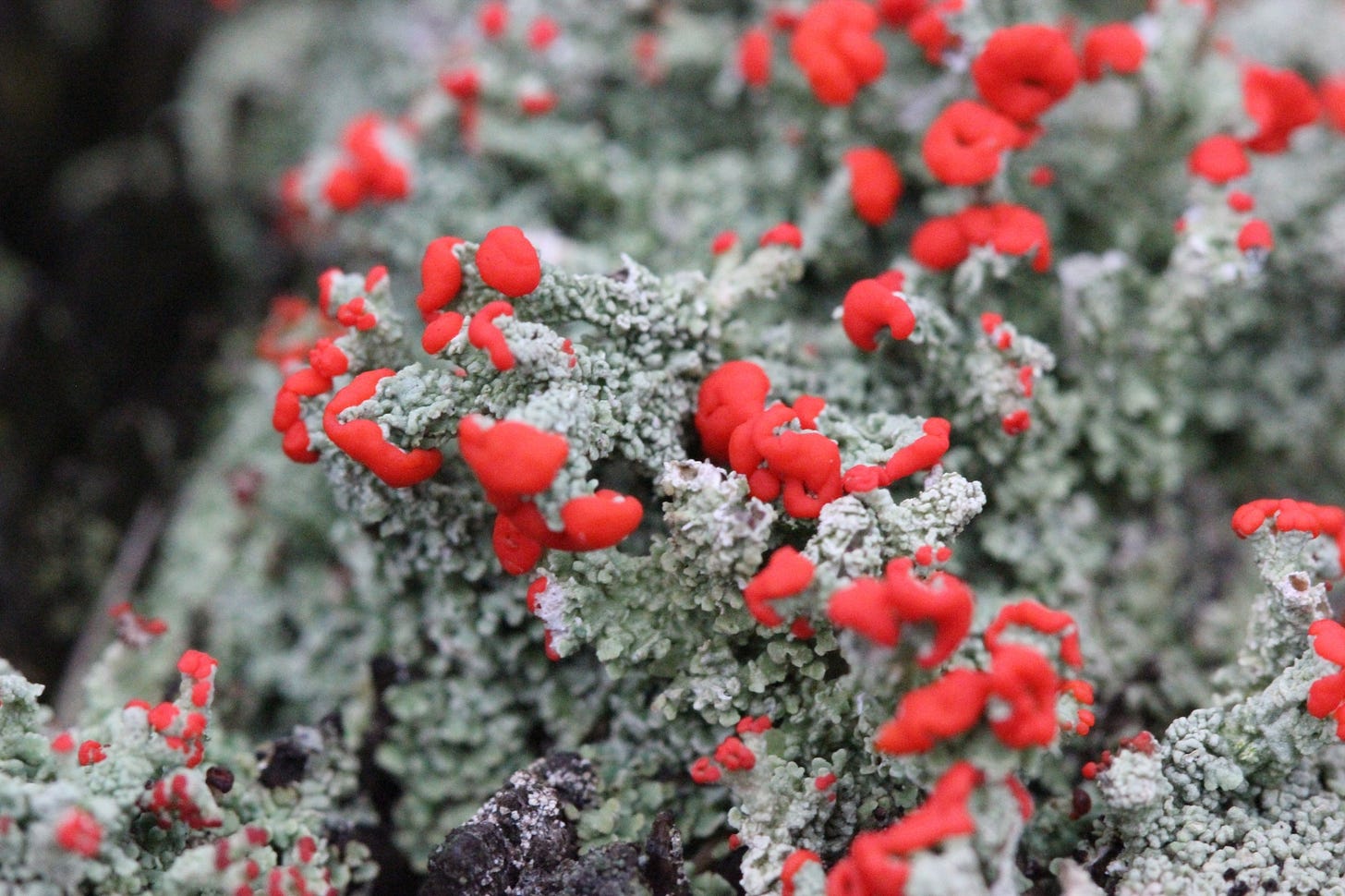
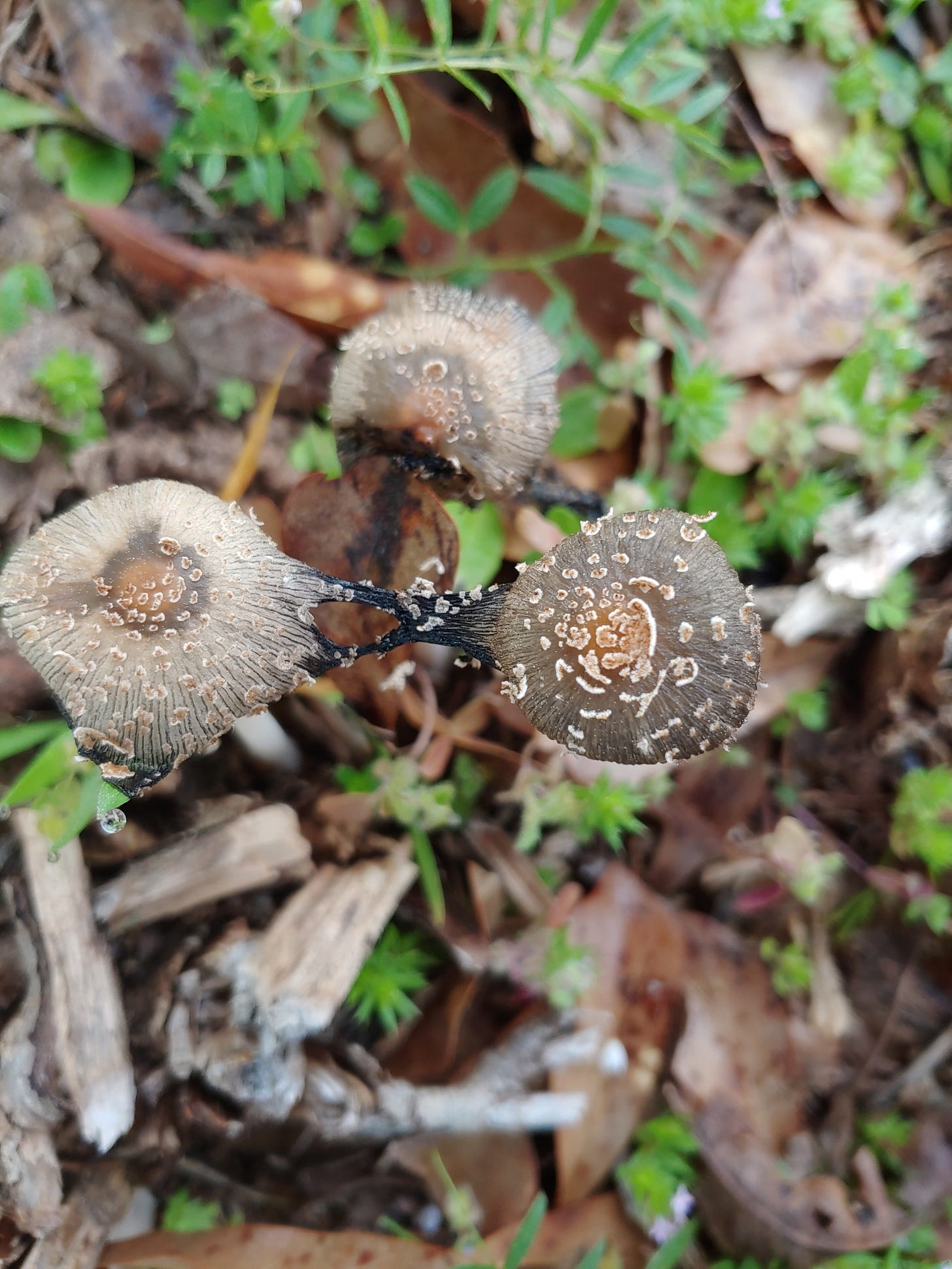
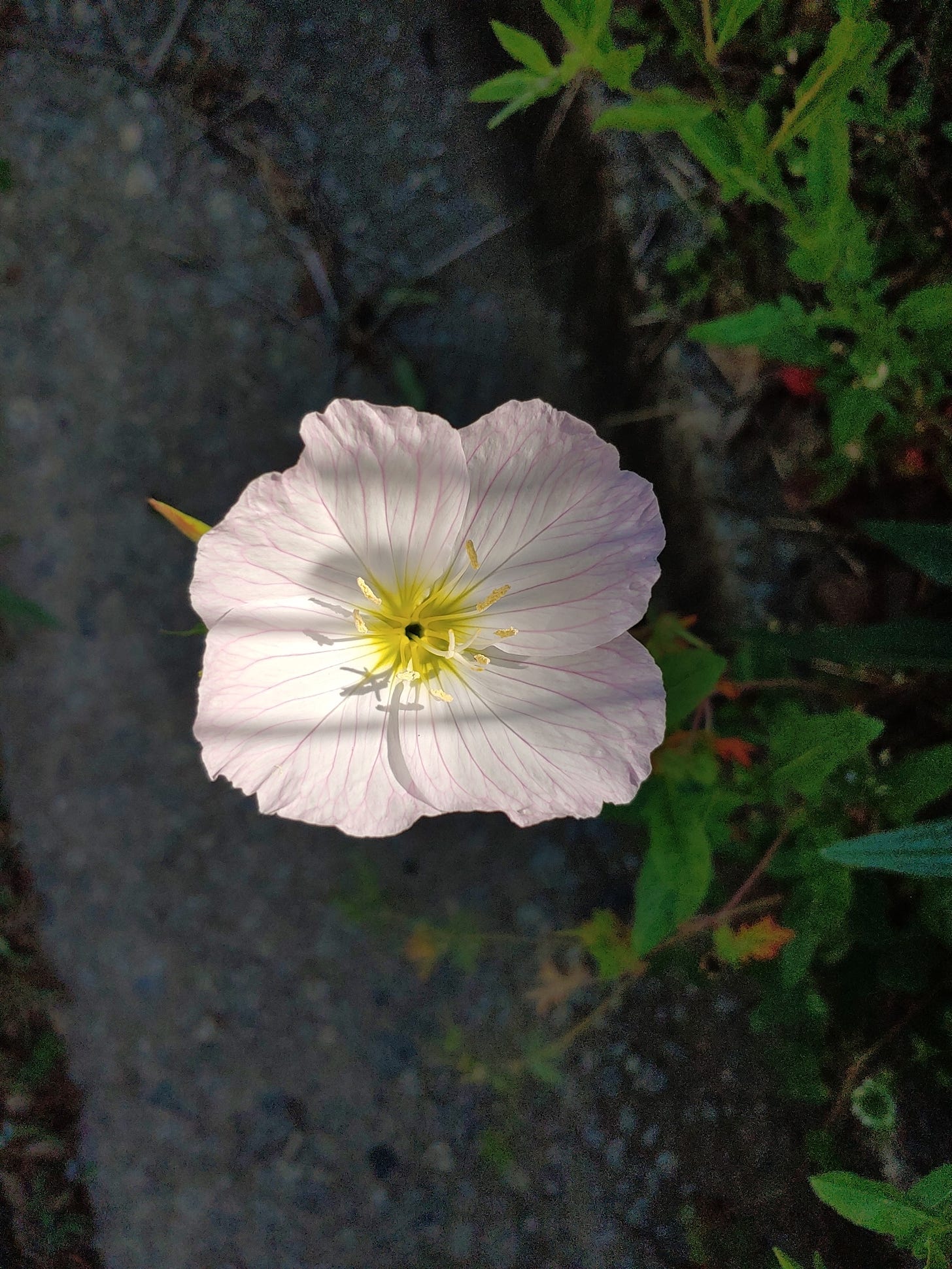
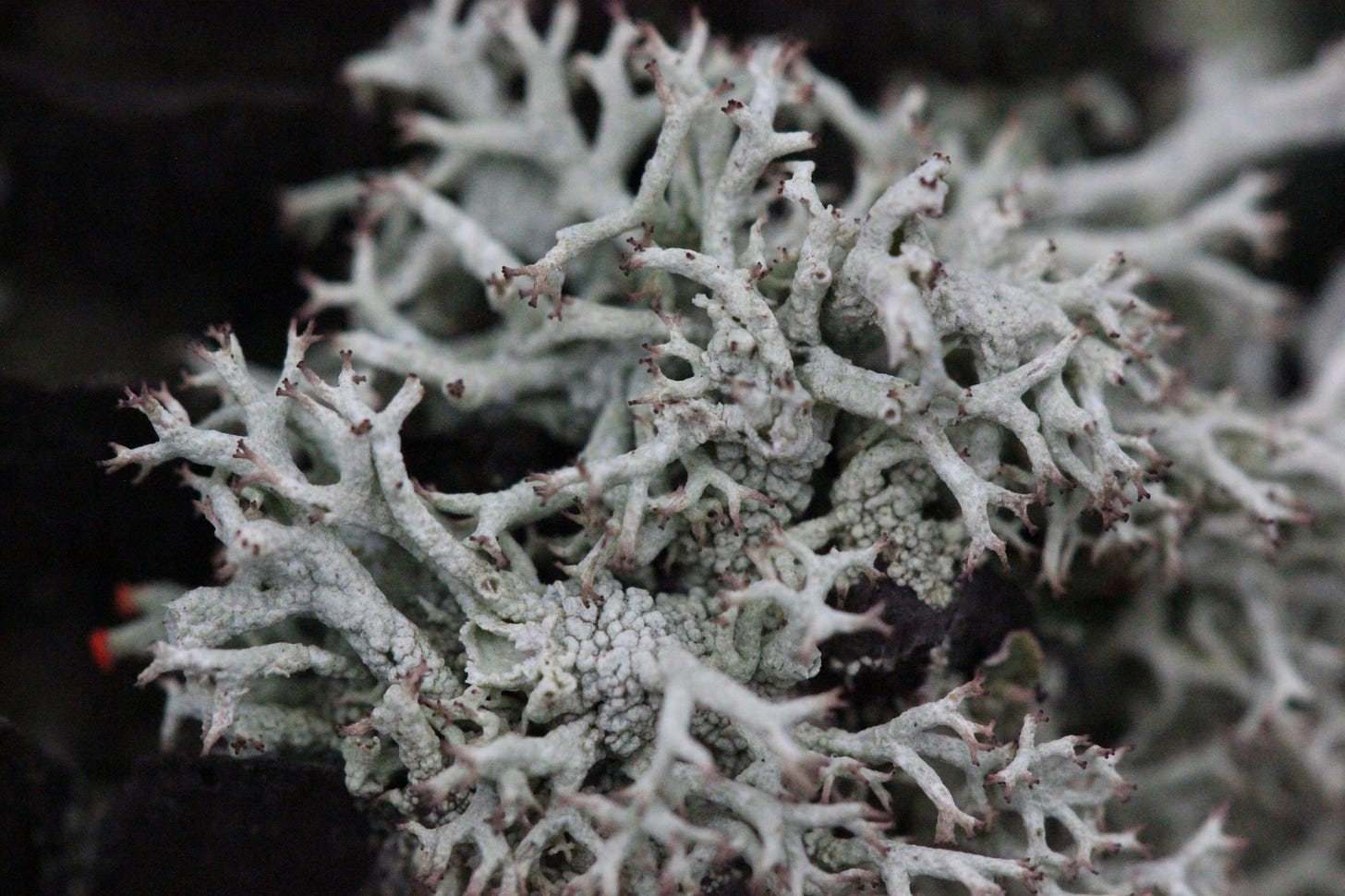
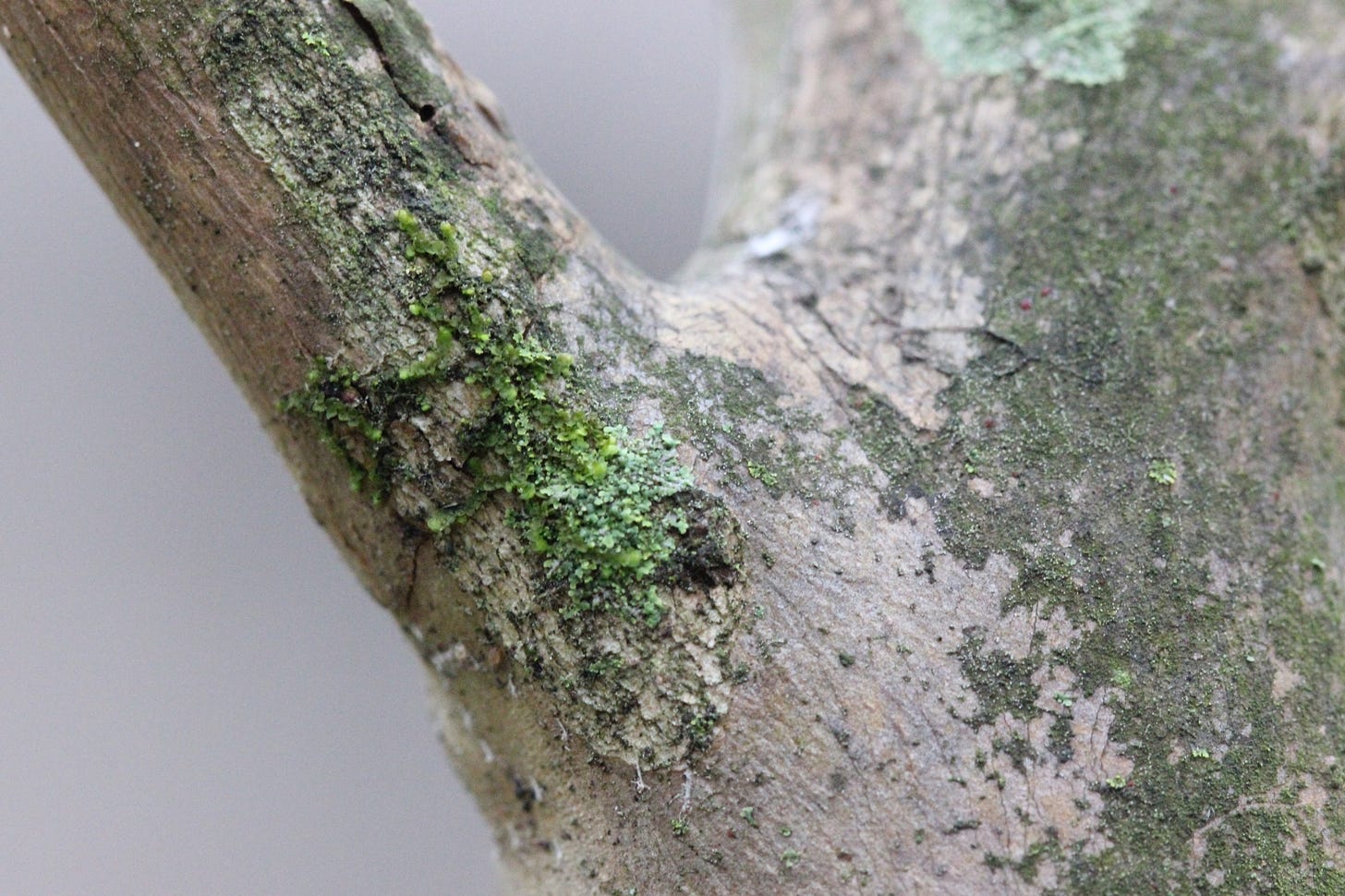
This is such a beautiful essay. I know the solitude that came with the pandemic was difficult, but reading how it awakened the senses and brought you closer to such a diverse natural place--that you ended up fighting to save--is inspiring.
This is so inspiring, Sarah! I listened to the recorded audio on my headphones, & it was a delightful listen - very well done. I am confident you will continue to be a catalyst for positive change in the neighborhood - I'm so grateful that our paths have crossed :)